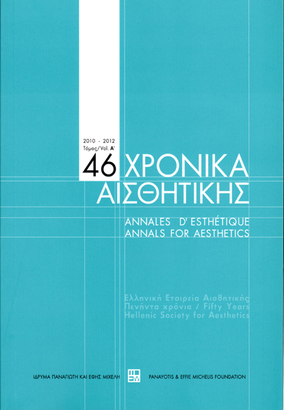Οι καλλιτέχνες και το κοινωνικό άτομο της εποχής του Παρθενώνα
Part of : Χρονικά αισθητικής : ετήσιον δελτίον της Ελληνικής Εταιρείας Αισθητικής ; Vol.46, No.Β, 2010, pages 151-158
Issue:
Pages:
151-158
Parallel Title:
Artists and the social individual in the age of the Parthenon
Section Title:
Αρχιτεκτονική / Architecture
Author:
Abstract:
In order to understand the work of the Parthenon, we have to know the age: the knowledge the artists possessed, the way in which they worked, the philosophical thought that influenced them, as well as the sociopolitical situation of the times and the extraordinary abilities displayed by Pericles.Weights and measures; the value of the golden ratio; the philosophical principle “Man is the measure of all things: of things that are, that they are; of things that are not, that they are not;” the relationship of equality between God and men; the Panathenaic Games, held in honour of Athena Polias, protector of the city of Athens; the principles of democracy and Cleisthenes’ reformation of the political organization into ten tribes instead of four; the Boule of five-hundred instead of four-hundred representatives; the elevation of the status of the Hippeis by Pericles; the economic potential of a republic not embroiled in wars; and the ability of Pheidias, as the resultant of the abilities of many artists, have produced an art “book,” in which we can read about that which the Greek philosopher Haralambos Theodoridis (1883-1958) describes as “the age of the greatest effort and the only one during which Man aspired to become human.”
Subject:
Subject (LC):




